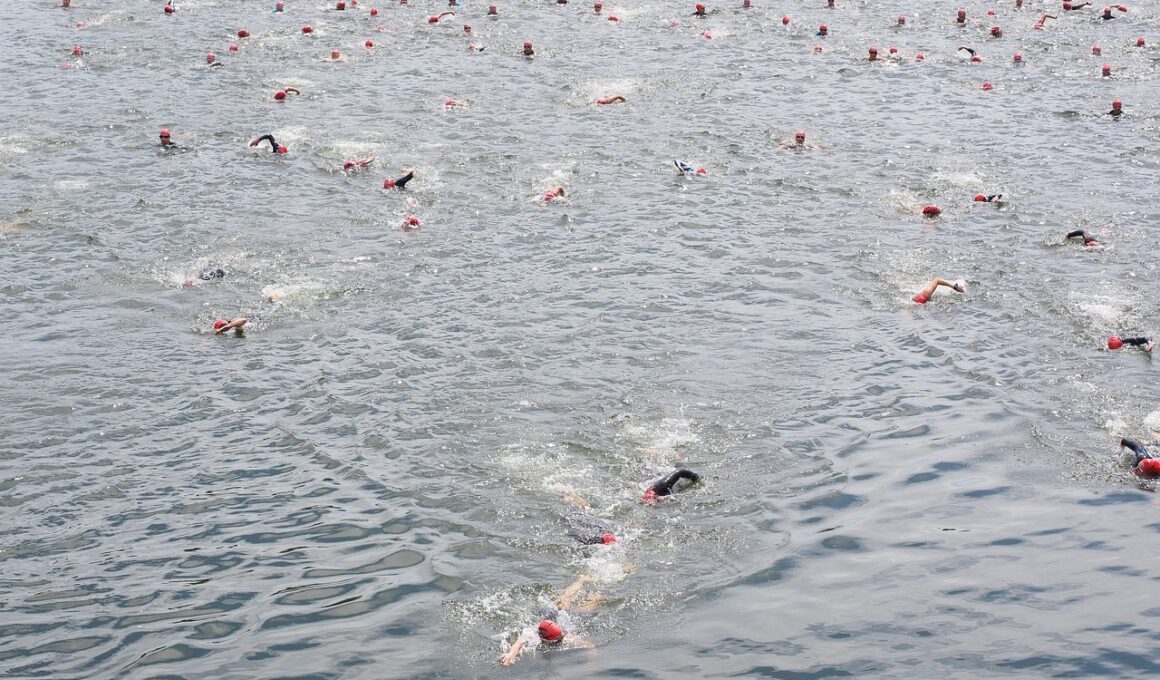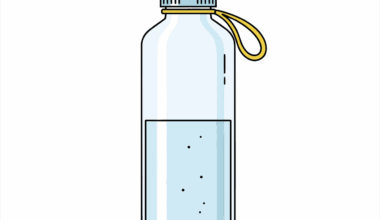Incorporating Drill Sets into Your Weekly Triathlon Swim Workouts
Triathlon swim workouts can be greatly enhanced by incorporating targeted drill sets. These drills improve various aspects of swimming technique, endurance, and speed. A well-structured swim workout should incorporate different types of drills to develop specific skills. For example, focusing on your catch, your breathing technique, and your overall body position can turn an average swimmer into a competitive triathlete. Almost all levels of swimmers, from beginners to experts, can benefit from practicing these targeted drills. The most effective drill sets will challenge core strengths while promoting strength and flexibility. Key techniques like sculling or fingertip drag should be practiced regularly to improve efficiency in the water. In addition to focusing on specific technique aspects, make sure to vary your rest intervals and repetitions to suit your training goals. While some may prefer to do fewer reps with longer rests, others may find greater gains from higher repetitions and shorter rests. This variation keeps your training fresh and keeps you progressing towards your swimming goals efficiently.
Types of Swimming Drills
To maximize your triathlon swim workouts, it’s essential to include a variety of swimming drills. Here are some effective types to consider:
- Catch-Up Drill: Strengthens your front quadrant swimming style.
- Single-Handed Drill: Helps focus on arm technique and body roll.
- Sculling Drill: Improves feel for the water and enhances your balance.
- Fingertip Drag: Promotes proper body position and encourages a high elbow.
- Kickboard Drill: Builds leg strength and core stability.
Incorporating these drills into your weekly schedule allows you to target various aspects of your swimming technique. Remember that consistency is key; performing drills regularly ensures that your improvements become ingrained. Many athletes benefit from scheduling these drills into specific swim sessions, alternating with endurance-focused workouts. Additionally, filming your drills can help you identify areas for improvement. Watching video footage can unveil nuances in your stroke that may not be felt during practice.
Drill sets require intentional focus on mechanics as well as performance. To accomplish this, you should aim to dedicate about 30-40 minutes of each swim session to practice drills. Integrate these drills within your workout routines; this will not only save time but also ensure you remain engaged throughout your sessions. Warming up adequately before drills is crucial; it helps to increase flexibility and reduce injury risk. Focus on smooth, controlled movements when executing drills, which maximizes their benefits. Slow and focused practice often yields better results than hurried attempts. Encourage feedback from peers or coaches regarding your form and execution of each drill. Regular assessments will highlight your strengths but also unveil areas for improvement. Document your progress in a training journal, as tracking milestones can significantly boost motivation. For example, note improvements in times for sets where specific drills were implemented. Over weeks, observe how your baseline swimming performance evolves as you continually incorporate these drill sets into your routine, ensuring a consistent upward trajectory in your swim technique.
Balancing Drills and Endurance Swimming
Balancing drill sets with endurance swimming is essential to becoming a well-rounded triathlete. It’s common for athletes to focus heavily on one aspect, like endurance, while neglecting to hone their technique. A successful training plan integrates both elements seamlessly. You might consider alternating drill-focused swim days with longer endurance sets that build stamina. For instance, you could dedicate Monday and Thursday to technique drills while reserving Tuesday and Friday for longer swims at a steady pace. This schedule allows for physical recovery and mental freshness, enabling you to perform at your best consistently. When swimming for endurance, incorporate some intervals where you sprint for 25-50 meters intermittently. This variation ties back to enhancing your speed, reinforcing how drills directly affect performance. Remember to prioritize rest and recovery, ensuring you do not exhaust yourself. Including activities like stretching and cross-training can complement your swim workouts effectively, facilitating a holistic approach to triathlon preparation. Ultimately, the goal is to emerge stronger and more versatile, ready to take on the challenges of race day with confidence.
Nutrition plays an equally vital role in supporting your swimming goals. During swim training, it’s necessary to fuel your body adequately to maintain energy levels. The focus should be on consuming a balanced diet that includes protein, carbohydrates, and healthy fats. After swim sessions, prioritize nutrients that assist recovery and muscle repair. Incorporate protein sources like chicken, fish, or plant-based options into your post-workout meals to support muscle recovery. Staying hydrated also directly impacts physical performance in the water. monitor fluid intake throughout the day and during swim workouts to maintain optimal hydration levels. During drills, consider using electrolyte-replenishing beverages for longer or intense sessions. Additionally, experimenting with energy gels or chews during practice can help determine what works best for you come race day. Develop a nutrition strategy that aligns closely with your training plan, as the ability to adapt will aid you significantly during competitions. Your body grows stronger with solid iterations of drill practice combined with robust nutritional strategies, creating a formidable pairing for triathlon training systems.
Tracking Your Progress
Monitoring progress effectively is crucial when integrating drill sets into your swim workouts. To achieve success, you must establish measurable objectives. This could involve timing your lengths for specific drills, learning the correct number of reps, and tracking the frequency with which you complete these drills. Consider using swim watches or apps to record data, which provides tangible feedback that can also spark motivation. Regular practice will improve your efficiency in the water, evidenced by increased speed and refined technique over time. Additionally, consider scheduling periodic swim tests to benchmark your progress. This test can include timed trials of longer distances where you focus on performance rather than drill execution. Combining drill work with these trials will add fuel to the fire of your resolve to improve. Celebrating small victories—like increased speed or improved form—will keep you inspired and engaged. Moreover, discussing your progress with fellow athletes or coaches can help bring fresh perspectives to your development. Cultivating an awareness of your swimming journey fosters an environment where growth becomes quite attainable.
In conclusion, incorporating drill sets into your triathlon swim workouts is essential for enhancing your swimming proficiency. By targeting specific areas of technique, athletes can make substantial gains over time. Remember to balance these drills with endurance-focused swimming sessions, allowing improvements in speed and conditioning to coexist. Pay close attention to nutrition, fueling your body appropriately to maximize performance. You should also track your progress diligently using a variety of tools available to today’s athletes. Consistent practice and a well-rounded training approach will prime you for race day challenges. Ultimately, the goal is not just to swim faster but to swim smarter, incorporating strong technique with robust endurance. As each training week progresses, reassess your drills and workouts, adjusting them as necessary for optimal growth. Engaging in discussions with coaches, peers, or through forums online can provide valuable insights for ongoing improvements. Every element, from drills to nutrition, is interconnected; ensuring a focus across all areas creates a comprehensive progression. Dive into incorporating these strategies and watch as your capabilities in the water grow, leading you towards achieving personal bests and competitive success.


